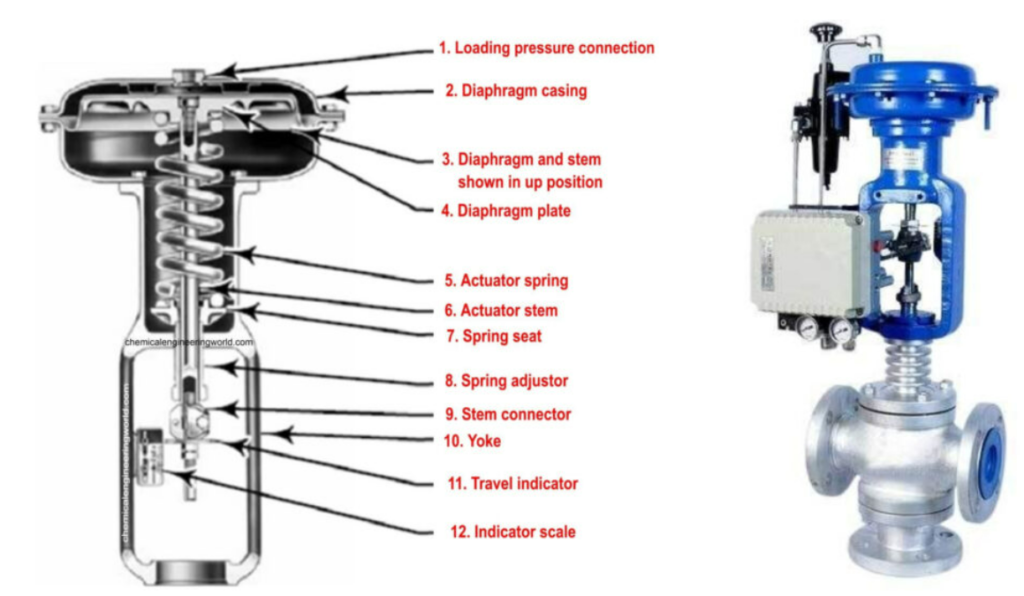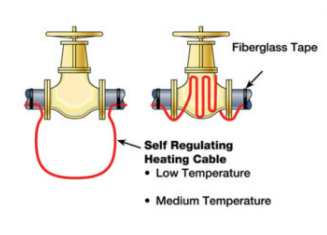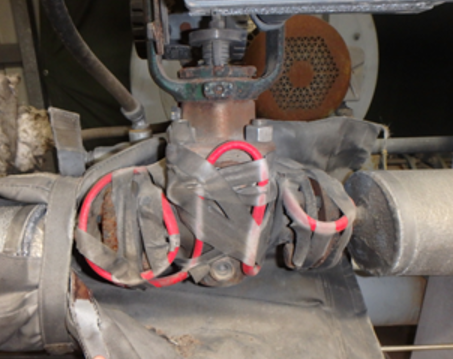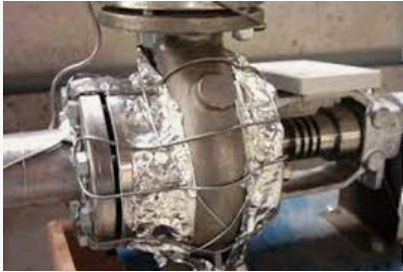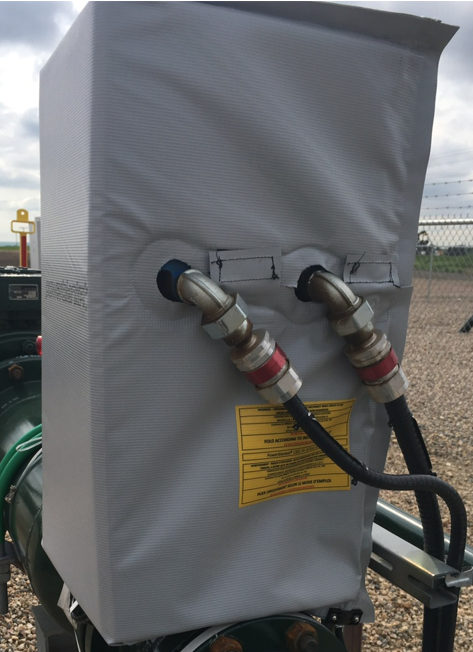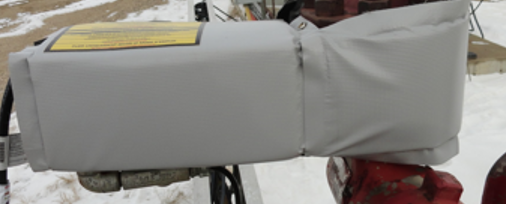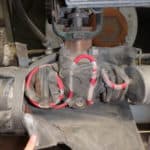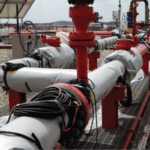Control Valves provide reliable process flow control to many processes throughout your facility. This type of valve is always very close to the final step of the process, and is key in delivering dependable flow right to your process.
Freeze ups occur on control valves all year long. Many think that just cold weather is the cause of valve freeze ups. Not always the case. Many processes require higher temperatures in order to work properly. For example, a line in a bread plant needs sugar water to flow at around 110° F. A candle factory needs 130° F +. Of course, water based flow streams will freeze below 32.
But what is it that freezes on a control valve? There are actually a lot of parts that could freeze and cause issues. Shutting down the whole entire process for one. Not good.
Main parts are the valve body (down below), the yoke and the actuator and actuator control.
Most engineers and maintenance teams will always cover the valve body and insulate over heat trace. It’s easier. But a couple of things are working against them.
- Is it the valve body that freezes? Not most often. It sure can happen. But product flowing through the valves are “coming from somewhere…and going to somewhere”. If that product flowing through the pipe is cold enough to freeze the valve, there will be bigger problems along that line.
- The mass of a valve per linear foot is much higher than the pipe it’s connected to. Take a valve that’s 12” flange to flange, and a 12” piece of pipe of that same size…the valve is much heavier. It takes more heat to freeze protect that valve than it’s associated piping. So current solutions like heat trace and steam trace say to add more heat- or more linear footage of pipe. That’s just not so easy.
Electric Heat Trace instructions say to do it like this:
And it comes out looking like this:
And suggested steam trace suggests that it be installed like this:
But it’s not just the valve that freezes..and… how in the heck are you supposed to replace the valve if it’s messed up? The answer you will get it’ either “that’s the way we’ve always done it” or “that’s how it was designed”
More often than not- the tracing will not even be installed this well. Since the tracing system is installed underneath the insulation- you really cannot see if it’s installed correctly. Many electric heat trace and steam trace lines are run right straight across the control valve body- doing no good at all because there is not enough heat being applied.
Heating the Yoke and actuator are often neglected. Power plants provide one of the best examples of issues caused by yokes being frozen up. Many critical control valves are located in a natural gas fired co gen power plant. One specific example are the bypass control valves. This is a control valve that allows the system to run in stand by mode, then in a moment’s notice, allow steam to be used to create power (in a very basic sense). These valves sit high up atop the HRSG, and the driving snow and rain actually will accumulate on the yoke of the control valve, and then permit that valve from actuating. No bypass will occur if the yoke is frozen. How in the world are you supposed to apply electric or steam trace to that?
A couple examples of these bypass control valves:
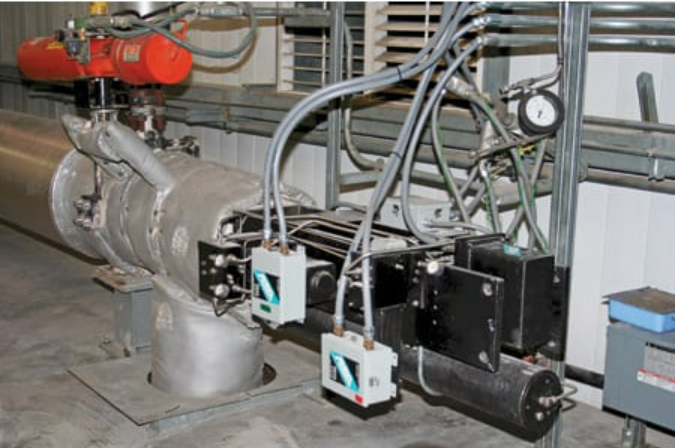
Finally there is the actual valve controller. It’s critical that these controllers are running so that the plant will know what is working or not.
The PowerBlanket control valve system provides a complete integrated heated box system that is Class 1 Division 2 rated, and can run on 120, 208 or 240 Volts. They can run off of your existing heat trace circuit breaker, or can be locally powered. PowerBlankets can cover the entire control valve system to include the valve body, yoke and actuator.
Access flaps, slots and holes to accommodate tubing or viewing of displays- No problem.
Well over 10X as much heat can be applied to the same surface area as with heat or steam trace, and your control valve and actuator are easy to access and service.
Give us a call today.
Frequently Asked Questions
Do I need a frost protection valve?
Yes, installing a frost protection valve is essential to prevent freezing in piping systems, especially in environments where temperatures can drop significantly, ensuring continuous flow and avoiding costly damage.
How does an antifreeze valve work?
An antifreeze valve operates by automatically draining the circuit medium when temperatures approach freezing, thereby preventing ice formation and protecting the system from potential damage
Powerblanket's equipment boxes keep your valves and manifolds from freezing in even the harshest outdoor environments.


